Best Orlando Treatment for a
CHRONIC LOW BACK PAIN
Are you not able to continue your cherished hobbies or everyday activities because of sharp pain in your low back when you move? With our expert doctors’ help, you can get to the root of your symptoms and get back to doing what you love quicker and easier.
Read More Ask A QuestionBest Orlando Treatment for a
CHRONIC LOW BACK PAIN
Are you not able to continue your cherished hobbies or everyday activities because of sharp pain in your low back when you move? With our expert doctors’ help, you can get to the root of your symptoms and get back to doing what you love quicker and easier.
Read More Ask A QuestionHere Is Everything You Need To Know About Chronic Low Back Pain, What Causes It, and The Best Way to Treat It
Click the tabs below to get direct answers to your questions
What is chronic low back pain?
If you have chronic low back pain, you are not alone. At any given time, about 25% of people in the United States report having low back pain within the past 3 months. In most cases, low back pain is mild and disappears on its own. For some people, back pain can return or hang on, leading to a decrease in quality of life or even to disability.
If your low back pain is accompanied by the following symptoms, you should visit your local emergency department immediately:
- Loss of bowel or bladder control
- Numbness in the groin or inner thigh
These symptoms might indicate a condition called “cauda equina syndrome,” in which nerves at the end of the spinal cord that control bowel and bladder function are being squeezed.
What are the common causes of chronic low back pain?
- Misdiagnosed and root cause not solved
- Severe degenerative disc disease
- Severe arthritis
- Weak low back and hip muscles
- Lack of hip range of motion
- Poor biomechanics
Where does it hurt?
In most cases of chronic low back, the patient will report of a dull ache to sharp pain across the whole low back area. They will report the pain going across their whole low back area which may get worse with certain activities. Sometimes, they will have associated glute pain, hip problems
What are common symptoms of chronic low back pain?
The symptoms of low back pain vary a great deal. Your pain might be dull, burning, or sharp. You might feel it at a single point or over a broad area. It might be accompanied by muscle spasms or stiffness. Sometimes, it might spread into 1 or both legs
- Acute – pain lasting less than 3 months
- Recurrent – acute symptoms come back
- Chronic – pain lasting longer than 3 months
Most people who have an episode of acute pain will have at least 1 recurrence. While the actual cause of low back pain isn’t often known, symptoms usually resolve on their own. Psychosocial factors, such as self-confidence and
Although low back pain is rarely serious or life threatening, there are several conditions that may be related to your low back pain, such as:
- Degenerative disk disease
- Lumbar spinal stenosis
- Fractures
- Herniated disk
- Osteoarthritis
- Osteoporosis
- Tumors of the spine
While we used to believe the above list contributed directly to low back pain, research has shown these conditions are also present in people without any pain (asymptomatic).
To Get A "Insider's Look" At Our Treatment Approach And How We Get Results...
Click Below To Watch Our Exclusive Webinar! It's Simple, Short, and It's Free!

- Learn The Essential First Step... So You Can Get Pain Free Again
- See Why Treatment Needs To Be Individualized, Not Standardized...So You Get Faster Results!
- Learn How You Can Save Money...So You Don't Have To Waste $1000's On Unnecessary Treatments
To Get A "Insider's Look" At Our Treatment Approach And How We Get Results...
Click Below To Watch Our Exclusive Webinar! It's Simple, Short, And It's Free!

- Learn The Essential First Step...So You Can Get Pain Free Again
- See Why Treatment Needs To Be Individualized, Not Standardized...So You Get Faster Results
- Learn How You Can Save Money...So You Don't Have To Waste $1000's On Unnecessary Treatments
Can chronic low back pain be treated?
Yes, chronic low back pain can be treated and with great results. Even better, many times it can be treated conservatively without needing injections, pain medications, or surgeries if you can actually solve the root cause of your problem. The key to treatment is to solve the root cause of your pain so you can get the best results and a long-term outcome.
Some root causes of chronic low back pain can be:
- A decreased mid back range of motion
- Poor posture in sitting
- Lack of hip range of motion
- Weak hip and glute muscles
- Poor lifting biomechanics
- Overloading low back area
- Tight low back and hip joints
- Poor biomechanics at work
- Too much sitting
- Developing fear of pain and movement
If you have failed multiple treatment approaches already, your clinician missed the real root cause of your pain and was just chasing the symptoms. The pain or symptom is the effect, not the cause. What do I mean by this? Say your fire alarm goes off in your house. Its purpose is to protect you and make you aware that something is wrong, i.e., that there is a fire in your house. The “alarm” is like your pain (your body’s way of telling you something is wrong) and the “fire” is the root cause. When the fire alarm goes off, you don’t run upstairs and just turn it off, right? You run through the house with the fire extinguisher, trying to find the room where the fire is at. You try to find out what caused the alarm to go off so you can put it out. Once the fire is out, then the fire alarm can go off. Solve the “root” cause of your pain, and then the pain (“the effect”) eventually goes away.
Additionally, there is a common root cause which many clinicians misdiagnose. They treat the low back pain with a cookie cutter approach, hoping it will work and treat it as a simple muscle problem. They tend to rely on stretching, ultrasound, massage, and focus treatment directly on the low back area. However, often the root cause is missed and the symptoms return. If you have failed multiple low back treatments and still have low back pain, then maybe it’s not a low back problem? Hmmm. Maybe the root cause in the hips! So many healthcare clinicians treat pain like this and thus show poor treatment outcomes which results in the pain coming back. Why? They missed the root cause of your low back pain. This is also the case when patients turn to injections, nerve blocks and other surgeries which are still not effective because the actual problem still is not solved, their treatment was just chasing the pain.
The first step in treatment is to identify the root cause of your pain. A specific and individualized treatment approach for your type of pain can lead to a successful outcome for you and resolve your symptoms for the long term. This is why you can’t rely on a standard cookie cutter approach; you need a customized and individualized treatment approach specifically for your type of low back pain.
What happens if it goes untreated?
Minor case – If it is a minor case of chronic low back, research shows that many acute cases of pain may spontaneously go away in 4-8 weeks. The key is to solve the root cause of what is causing the actual low back pain? Being told you have chronic pain is just the duration of time you have had the low back pain. Many of our patients have chronic low back pain, but once the root cause is solved, they respond great!. But who wants to wait 8 weeks to get pain free? Let’s try to solve the root cause of your pain in 2-3 weeks and address all of the risk factors present (so it never returns!) and get you back to your favorite activities faster! We still recommend that you get it checked out by one of our board-certified physical therapists to ensure that it is just a minor case, to solve all risk factors, and to get the optimal outcome in the fewest visits needed. Most minor cases resolve on their own in time or get better with some stretching and strengthening. But, the sooner you take action, the sooner you are pain-free. (And research supports this!)
Severe case – If it’s more of a severe and chronic low back pain case, your pain will probably start to worsen and increase because the root cause of the pain is not being treated. Many people turn to pain medication and injections at this time but this only blocks the pain for short term. You may not feel the pain when taking pain medications, but the underlying problem is still there. Many people say after the pain medication and injections wear off, then usually the pain returns and sometimes it returns even worse. This is when you will get increased low back muscle tightness, increased sharp pain, and sometimes it may radiate into the glute and hip region. If your low back pain continues to worsen, then you start avoiding moving, become scared of your low back pain, and you stop doing the things you love. Even though it’s more chronic now, we can still help. Many chronic low back pain cases can still get a 50-100% reduction in pain! Once the root cause and all risk factors are addressed, then we can start decreasing your pain, regardless of how chronic and severe the pain is. This is the crucial first step. It just may take more time to recover from a chronic case. Usually with chronic and severe cases, the longer you have your pain and injury, the longer it takes to resolve.
What outcome can you expect from treatment?
As we’ve discussed, the first step is to solve the root cause of your chronic low back pain. This is the most essential step to plan a treatment specialized for you and your unique type of pain. Your root cause will guide your treatment and dictate what is the best way to treat your pain. This, along with identifying risk factors that may be predisposing you to have your pain and injury, will allow you to start getting pain free again. The next step is to start decreasing pain, modifying activities, and start addressing all of the impairments causing your pain which we discovered during your evaluation. With each session, pain should start to decrease and you should start to regain range of motion with less pain and symptoms. Any radicular and referred pain should resolve fast as well. At this point, we begin light and basic strengthening only if it does not increase pain. Treatment will consist of a lot of manual therapy and light exercises.
The next step is to achieve full range of motion, (which should correlate to being pain-free) and now we can start progressive strengthening. Strengthening the muscles is crucial and research shows that this gives you the best long-term outcome! As you start to get stronger and maintain your mobility, your pain will continue to decrease if it is not already gone. Your increased strength will allow you to perform more activities and prevent flare-ups. This usually does take up to 4 weeks. As you clear our goals, then we can start easing you back into sport, golf, running, and whatever your favorite activities are. This is when we start winding down treatments and getting you back into functional strengthening, sport specific training, return to run programs, golfing, and whatever your goals are. In the end, we reassess everything, making sure we achieved all of our goals, your goals, that all risk factors are gone, and finalize your long-term home exercise program. There are many factors which can influence your outcome, but 85-90% of our patients respond well to our treatment approach and achieve a successful outcome when completing their plan of care.
To Get A "Insider's Look" At Our Treatment Approach And How We Get Results...
Click Below To Watch Our Exclusive Webinar! It's Simple, Short, and It's Free!

- Learn The Essential First Step... So You Can Get Pain Free Again
- See Why Treatment Needs To Be Individualized, Not Standardized...So You Get Faster Results!
- Learn How You Can Save Money...So You Don't Have To Waste $1000's On Unnecessary Treatments
To Get A "Insider's Look" At Our Treatment Approach And How We Get Results...
Click Below To Watch Our Exclusive Webinar! It's Simple, Short, And It's Free!

- Learn The Essential First Step...So You Can Get Pain Free Again
- See Why Treatment Needs To Be Individualized, Not Standardized...So You Get Faster Results
- Learn How You Can Save Money...So You Don't Have To Waste $1000's On Unnecessary Treatments
How is it diagnosed?
Your physical therapist will perform a thorough evaluation that includes:
- A review of your health history.
- Questions about your specific symptoms.
- A thorough examination that includes assessing the quality and quantity of your movements, and any movement behaviors that might put you at risk for delayed recovery.
- Tests to identify signs or symptoms that could indicate a serious health problem, such as broken bones or cancer.
- Assessment of how you use your body at work, at home, during sports, and at leisure.
For most cases of low back pain imaging tests, such as x-rays, computed tomography (CT) scans, and magnetic resonance imaging (MRI) are not helpful for recovery. For example, in a recently published article comparing patients who received an MRI first vs physical therapy first for low back pain, the patients who received an MRI first spent on average $4,793 more (with similar outcomes in each group). If your physical therapist suspects that your low back pain might be caused by a serious health condition, the therapist will refer you to other health care professionals for further evaluation.
Do you need an X-ray and MRI imaging for chronic low back pain?
As we’ve discussed, the first step is to solve the root cause of your chronic low back pain. This is the most essential step to plan a treatment specialized for you and your unique type of pain. Your root cause will guide your treatment and dictate what is the best way to treat your pain. This, along with identifying risk factors that may be predisposing you to have your pain and injury, will allow you to start getting pain free again. The next step is to start decreasing pain, modifying activities, and start addressing all of the impairments causing your pain which we discovered during your evaluation. With each session, pain should start to decrease and you should start to regain range of motion with less pain and symptoms. Any radicular and referred pain should resolve fast as well. At this point, we begin light and basic strengthening only if it does not increase pain. Treatment will consist of a lot of manual therapy and light exercises.
How can a Physical Therapist treat it?
Your physical therapist can help you improve or restore mobility and reduce low back pain—in many cases, without expensive surgery or the side effects of medications
- Stay active, and do as much of your normal routine as possible (bed rest for longer than a day can actually slow down your recovery.)
- If your pain lasts more than a few days or gets worse, schedule an appointment to see your physical therapist.
Not all low back pain is the same, so your treatment should be tailored to for your specific symptoms and condition. Once the examination is complete, your physical therapist will evaluate the results, identify the factors that have contributed to your specific back problem, and design an individualized treatment plan for your specific back problem. Treatments may include:
- Manual therapy, including spinal manipulation, to improve the mobility of joints and soft tissues
- Specific strengthening and flexibility exercises
- Education about how you can take better care of your back
- Training for proper lifting, bending, and sitting; for doing chores both at work and in the home; and for proper sleeping positions
- Assistance in creating a safe and effective physical activity program to improve your overall health
- Use of ice or heat treatments or electrical stimulation to help relieve pain
How long does it take for recovery?
Recovery time for chronic low back pain depends on multiple factors:
- The severity and chronicity of your pain
- Whether your pain is an easy or complex case
- If the root cause of your pain was solved or if it was missed (this is the key to getting a great recovery!)
- How long you have been in pain for and when you need to be pain-free by
- Other therapies and treatments you have tried
- Which medical professional(s) you saw prior to seeing us
- How active you are in trying to resolve your pain
- Which treatment approach is chosen and if it is proven to work for your pain
There are many factors that influence your recovery time and every patient’s recovery time is different. If you do nothing and don’t pursue treatment, it could gradually get better on its own, you could continue to have the same pain persist, or it could continue to get worse. As stated earlier, most acute cases may or may not resolve in 4-8 weeks. If you get expert treatment that solves the root cause of your pain, some cases resolve in 1-3 weeks! Then you can get back to sports, exercise, and your favorite activities without flare-ups and recurrences. Some of our patients are pain-free in 1-3 visits and back to 100% in 2 weeks!
If it is a complex case with chronic pain, your recovery may take longer, but you can still get a good outcome. Some chronic cases can resolve as fast as 2 months but can take as long as 4-6 months. It varies with every patient because every case of chronic low back pain is different. Every patient’s recovery varies depending on the factors listed above. After a thorough evaluation here at Pursuit Physical Therapy, you will know your exact timeline of recovery, your prognosis, and when you should reach your goals.
How much does it cost?
The average cost of care for a case of spine pain in the US is $1800-$6600. This high price is due to many factors: the over-inflated cost of healthcare, the over expensive cost of unwarranted imaging (x-rays, CT scans, and MRIs) that is not needed, over-utilization of care (which increases the number of visits needed to be treated, requiring multiple visits to different doctors and physical therapists for the same diagnosis), and getting billed for unnecessary and unproven treatments that you don’t even need. All of these factors increase cost and this is why healthcare is so expensive. We strive to end that unnecessary, expensive cycle. In fact, we are currently publishing our first-year data with the University of Central Florida that shows the cost-effectiveness of our treatment approach.
This year, the average cost of our care was shown to be $814-$1141. Some of our patients get even as low as $315 for the full treatment! So if you have a deductible of $3,000-$10,000 and you have to pay out of pocket for your treatment, we can save you lots of money.
Remember, every case of pain is different and not all chronic low back pain is the same. It is hard to predict exactly how much your treatment is going to cost you. But after a thorough evaluation, we can tell you exactly what is causing your pain, how long it is going to take, what the best way to treat it will be, and exactly how much it is going to cost. We have no hidden fees, no co-pays, and no miscellaneous bills that you will be surprised by 3 months after you receive treatment. Your pain, your diagnosis, your goals, and what is best for you dictate your treatment and how much it will cost, and while it varies for every patient, treatment at Pursuit is still much more affordable than standard healthcare.
How long are sessions?
Our evaluations are always one-on-one with one of our board-certified specialists and 60-90 minutes long. We like to perform thorough evaluations so we can solve the root cause of your pain, identify all risk factors, and make sure that we do it right. After the evaluation, you will know your diagnosis, the root cause of why you have your pain and symptoms, your prognosis, an expected timeline of when you should see results, what the best way to treat your pain is, how much it will cost, and your expected recovery outcome. We want you to fully understand everything about your pain and injury. What is best for you and will get you the best outcome is what will dictate your care and treatment. There will be plenty of time for you to ask questions so we can make sure you fully understand why you have your pain and what the best way to treat it will be. After the evaluation is completed, all treatment sessions are 60 minutes going forward and still one-on-one with your physical therapist. You and your physical therapist will design a customized treatment plan that works for you and that will achieve your goals.
How can it be prevented?
As experts in restoring and improving mobility and movement in people’s lives, physical therapists play an important role not only in treating persistent or recurrent low back
- Use good body positioning at work, home, or during leisure activities.
- Keep the load close to your body during lifting.
- Ask for help before lifting heavy objects.
- Maintain a regular physical fitness regimen—staying active can help to prevent injuries.
There is evolving evidence suggesting that the best strategy
What are the next steps?
Getting started is simple. The first step, and the key to getting you
Solve the root cause of your pain
How Our Treatment is Different
We believe that working with a specific specialist for your care is the best way to solve the root cause of your pain. Work one-on-one with a Doctor of Physical Therapy every time your visit our office.
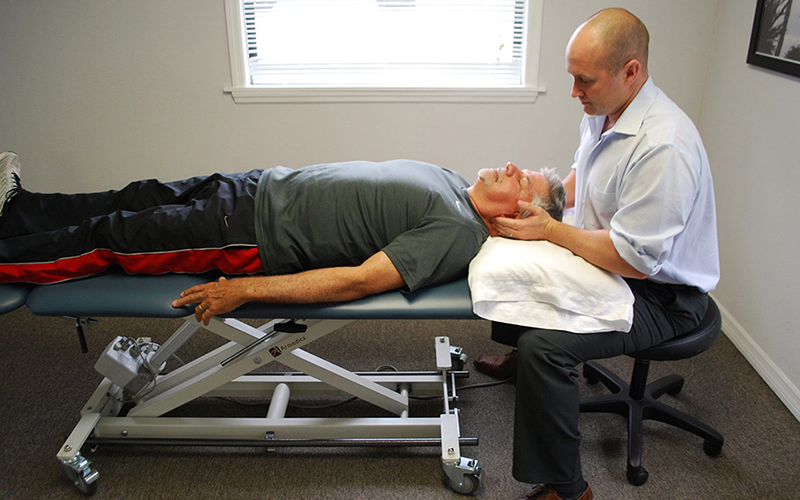
Exclusive one-on-one patient care
While most clinics will give you a limited amount of time with your Doctor, we believe that true results come from consistent one-on-one therapy.
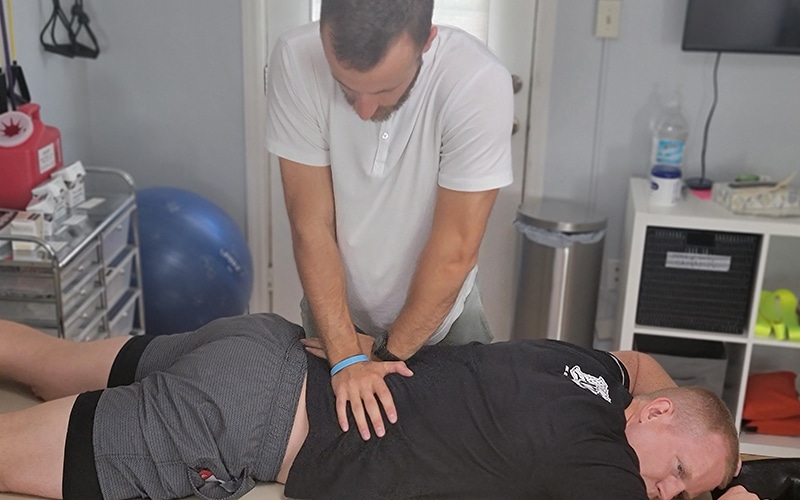
Work with your specialist every visit
Stop being handed off to trainees or non-Doctors for your Physical Therapy. At Pursuit, you'll work exclusively with your Doctor of Physical Therapy that specializes in your specific needs.
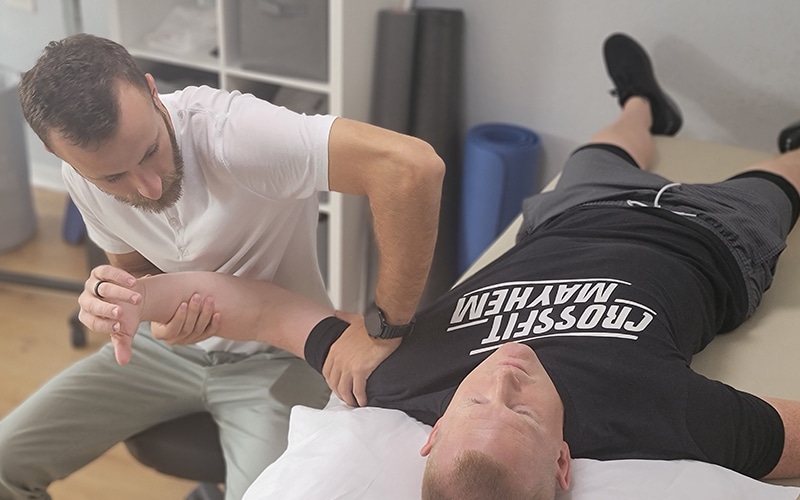
24/7 messaging access to your specialist
Ever have an issue or questions? We're here to help. Get 24/7 access to your specialist while you're under our care. Physical Therapy doesn't just happen when you're in our clinic, so we're here for you when you need us.
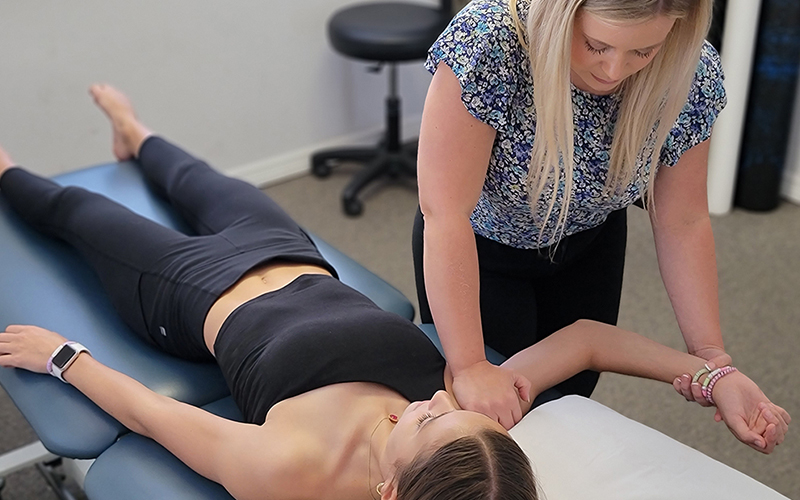
No waiting periods
Get off that waiting list and get the treatment you need. We're always ready to accept new patients, so you can get better faster and get back to a pain-free life that you deserve.
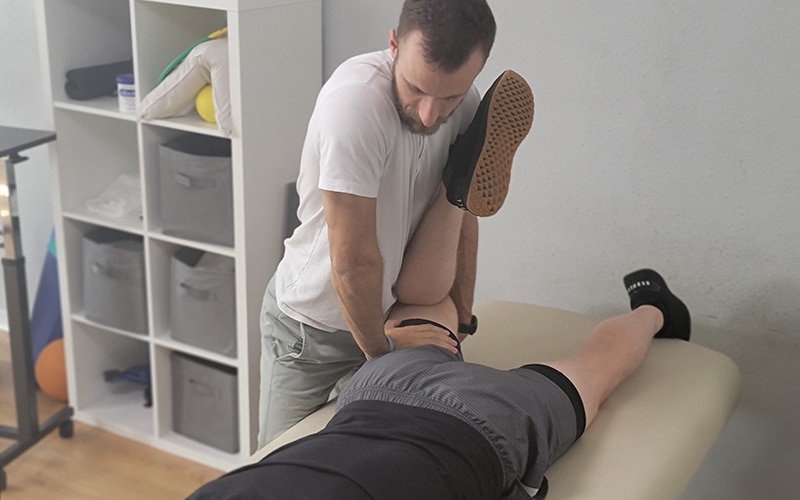
Not limited by insurance
Don't let the insurance companies tell you how much treatment you need. Avoid the limitations of short sessions that insurance provides and work with our Doctors when you need it and for as long as you need it.
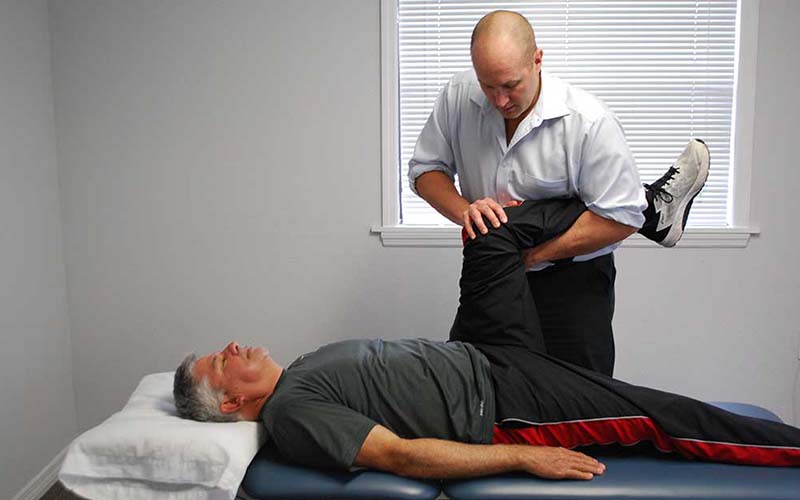
No painful injections, no expensive medications, no surgery
In order to truly solve your pain, we use a holistic approach to Physical Therapy, not relying on injections, medications, or surgery. Instead, we'll strengthen your body's weak points that are causing your pain.
MEET THE TEAM

RON MILLER, DPT, OCS, Cert DN
Doctor of Physical Therapy | Board Certified Orthopaedic Physical Therapy Clinical Specialist | Post-Doctoral Orthopaedic Residency Trained | Certified in Dry Needling | Titleist Performance Institute Certified
Dr. Ron Miller is the owner and founder of Pursuit Physical Therapy. His core belief is that it is not about the physician, the physical therapist, or the insurance company: it is about what is truly best for the patient. Dr. Miller started...

CAREY ROTHSCHILD, DPT, OCS, SCS, CSCS, CKTP
Doctor of Physical Therapy and Assistant Professor at the University of Central Florida | Board Certified Orthopaedic Clinical Specialist
| Board Certified Sport Clinical Specialist
Dr. Carey Rothschild is an Assistant Clinical Professor in the Doctor of Physical Therapy Program at the University of Central Florida. Dr. Rothschild earned a Bachelor of Health Science in Physical Therapy in 1999 from the University of Florida and a Doctor of Physical Therapy from Boston University in 2005...


MICHAEL FABRICK, DPT, Cert. DN
Doctor of Physical Therapy | Certified in Dry Needling | Pursuit Sports Performance Specialist | Professional Tennis Tour Physical Therapist
Dr. Michael Fabrick was born and raised in Hanover, Pennsylvania and attended Slippery Rock University where he received his Bachelor’s degree in Exercise Science. He then went on to receive his Doctorate Degree in Physical Therapy in May of 2020. During his final tenure as a Doctoral intern, he trained underneath Todd Ellenbecker, who is one of the world’s leading experts on shoulder rehabilitation and is the Vice President of Medical Services for the ATP World Tour...
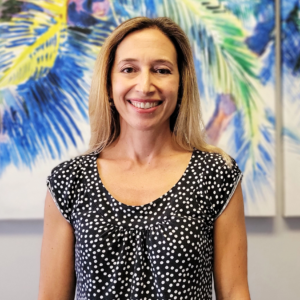
MARYANN DANIELS, PT, MCMT, IDN
Physical Therapist | Dry Needling Certified | Mastery Certified In Manual Therapy | Pelvic Floor And Post Partum Specialist
Maryann was originally born in Connecticut but moved to Florida with her family at the age of 9 and she grew up in Jupiter, Florida. She then went to college at the University of Central Florida...

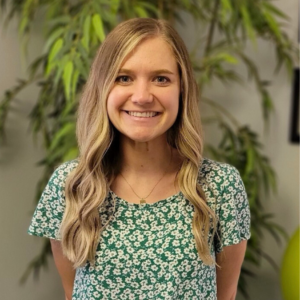
Kayla Cook, DPT, HSP, CSCS
Doctor of Physical Therapy | Hesch Sacroiliac Practitioner | Certified Strength And Conditioning Specialist | Ehlers-Danlos Syndrome Specialist | Volleyball Specialist
Dr. Kayla Cook was born and raised in Northern California and received her undergraduate degree in Kinesiology from California State University in Sacramento. She then received her Doctorate in Physical Therapy from The University of St Augustine for Health Sciences...
BECOMING PAINFREE IS EASIER THAN YOU THINK

Step 1:

Step 2:


 Jessica S.
Jessica S. Lisa B.
Lisa B.